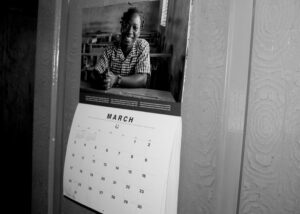Relationships in an age of ‘impacts and outcomes’
Re: “The future of MCC,” Aug. 31, page 11.
Certainly relationship has been at the core of Mennonite Central Committee (MCC) for many years. But is that still really the case?
I began my first MCC assignment in 1990 when we used to talk about the importance of drinking tea with the people and when village orientations were seen as critical to a successful cross-cultural experience. Great worth was placed on mutually transformed relationships as values and worldviews were challenged. At the same time, we did solid work: building dams, teaching students and planting measurable numbers of trees.
In 2012, I was invited to an administrative assignment with MCC in Africa, where I quickly discovered that not only were village orientations not part of the current vocabulary, but the focus was now on impact and outcomes. All partner projects were measured using “indicators” that can be counted in order to assess whether a difference has been made.
Currently, one of the more common service-worker assignments is designed to help partners understand MCC’s proposal and report writing requirements, whether for a $3,000 or a $300,000 project. This kind of accountability can often guide a project to greater impact, but, at the same time, its demands and time-consuming nature is sometimes won at the expense of relationships.
One long-term North American service worker, with decades of MCC experience, made the analogy to the pendulum and how MCC is trying to catch up to current “development practice” when actually the pendulum may already be swinging back to the area of MCC’s traditional strength: relationship.
Dave Klassen, Kitchener, Ont.
Militarization of Canada concerns reader
Re: “Mennonites should denounce Canadian arms sale” letter, Aug. 31, page 7.
I’m on the same page as David Shantz when it comes to wondering if Mennonite leaders and teachers have gone into hiding on the issue of Canada’s growing militarism. Our government’s condemnation of American war resisters as criminally inadmissible within our borders and its multi-billion-dollar arms agreement with Saudi Arabia are just two examples of Canada’s reputation as a peace-loving nation gone rogue. There is very little that the present government won’t do to militarize Canada.
I would be far more interested in articles encouraging our young people to consider Christlike conscientious objection over militarism than I am in another article on disagreements within our denomination about biblical interpretations on matters of sexual orientation.
Eric Unger, Winnipeg
Mennonite foster parents weren’t part of ‘assimilation’ strategy
Re: “Mennonites have yet to reckon with their role in ‘sixties scoop,’ ” Sept. 14, page 20.
It was disappointing to read this article because the history of indigenous children in foster care in Manitoba is varied and complex. Blaming foster parents who provide much-needed care and nurture is short-sighted.
It is unfortunate that the article quoted Judge Kimmelman from the 1980s, but ignored current articles by Brian Giesbrecht, a now-retired provincial court judge in Manitoba from 1976 to 2007.
Writing in the Manitoba press earlier this year, Giesbrecht stated: “In the 1970s and ’80s I was a judge hearing child welfare cases on a daily basis. . . . The agonizing choice facing a child welfare worker, then as now, was whether to leave a child in a substandard and possibly dangerous situation—and risk a tragedy—or remove the child from the home.”
He continues: “The workers I worked with during that time period were some of the finest people I ever had the good fortunate work with. The workers were generally well-informed about cultural issues. . . . The child care workers, some of whom were aboriginal, went to extraordinary lengths to try to keep families together.”
Working in Manitoba child welfare during those years, I’m well aware of the many caring and nurturing Mennonite foster parents who parented foster children. To suggest, as the article does, that placing indigenous children in non-indigenous families was part of the “Canadian government’s strategy of assimilation” is nonsensical paranoid thinking.
A September 2015 Manitoba news item reports that first nation social workers are seizing an average of one newborn indigenous baby a day. This usually means a judge has decided that there are good reasons for removing the infant. Not much has changed over the past 40 years, and foster homes are still needed.
Henry Neufeld, Delta, B.C.
Editorial unfairly targets older Mennonites
Every once in a while I get quite exasperated with Canadian Mennonite. I take issue with the Aug. 31 editorial, “Young people—our national treasure,” on page 2. While I agree with Dick Benner that our young people are very dear to us, as he says, they are a “national treasure,” why could he not have written this without taking a swipe at our forefathers and elders?
He says our young people have a better education, have travelled more and are more tolerant and active than our older generation. This is possibly true, but who built our Bible schools, colleges and Canadian Mennonite University? Who pays for the travel, the tuition at these schools, not to mention the students’ cars and computers? Is it not our parents and leaders like Bishop Toews, J.J. Thiessen and many others in their time?
The editor writes that the older generation was more preoccupied with “finely tuned theological statements” and “pietistic pontifications about personal salvation and discipleship,” while the young generation of today are “shoe-leather” Christians who are more concerned with “being and doing.”
I believe personal salvation is the most important thing for every person and then the work and serving will automatically follow. My father was born in Ukraine in 1900. He experienced all the horrors, death, disease and starvation of that time. He was ordained as a minister at 25. Here in Canada, even during extreme poverty and isolation, he fulfilled his voluntary ministry for more than 40 years. He often rode horseback on cold mornings for 20 kilometres to preach a sermon.
One summer our aunt wrote in her diary: “This morning Abram Martens walked to church (again 20 kilometres) because he was resting the horses.” That was literal “shoe-leather” dedication!
Cornie Martens, Rabbit Lake, Sask.







Leave a Reply
You must be logged in to post a comment.